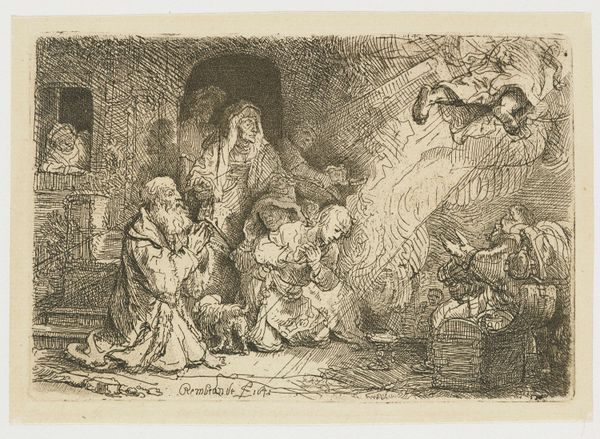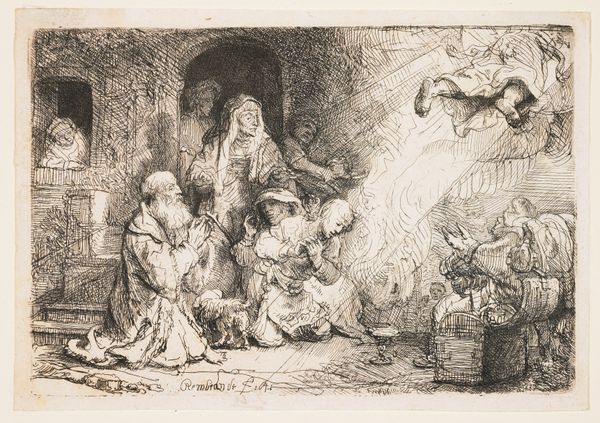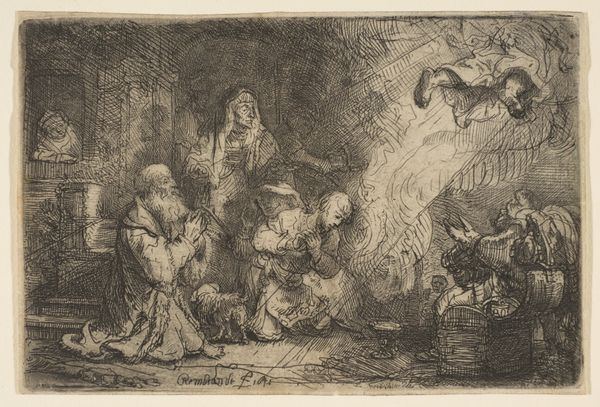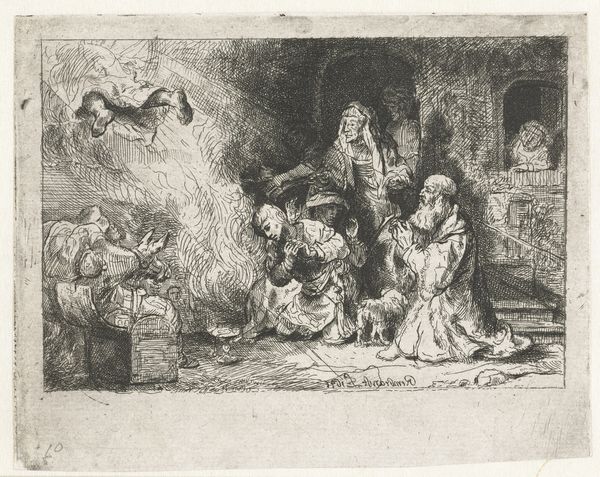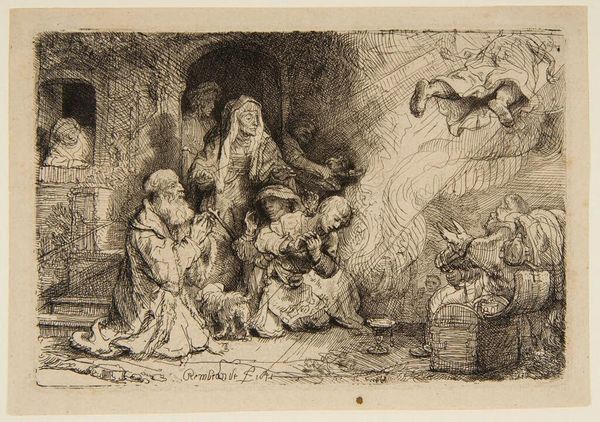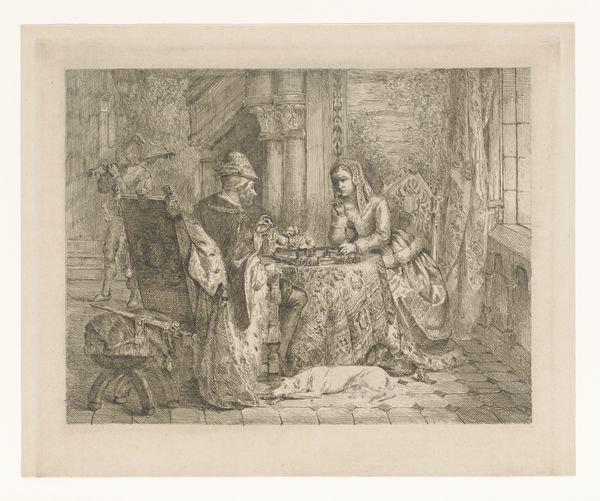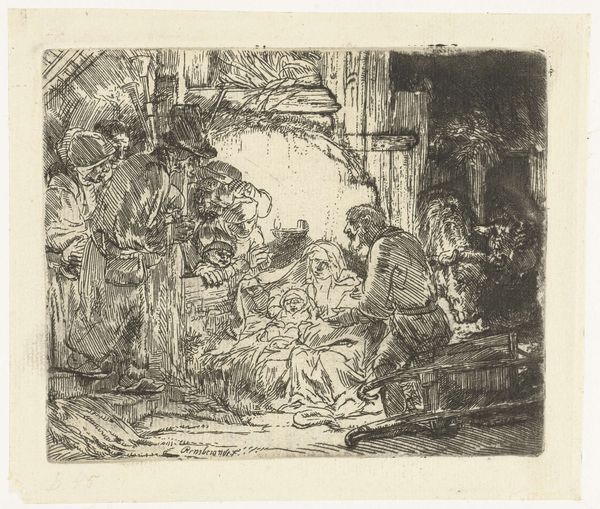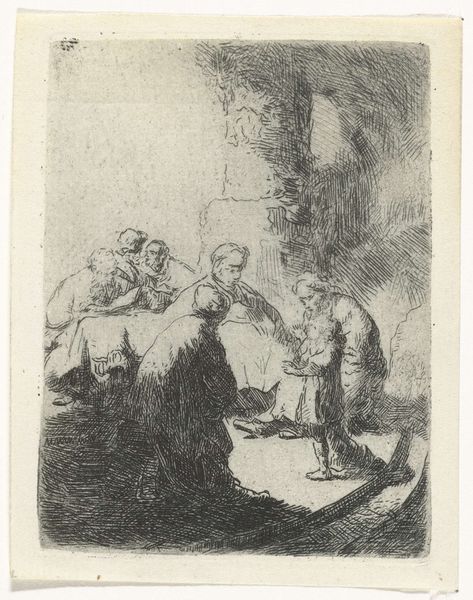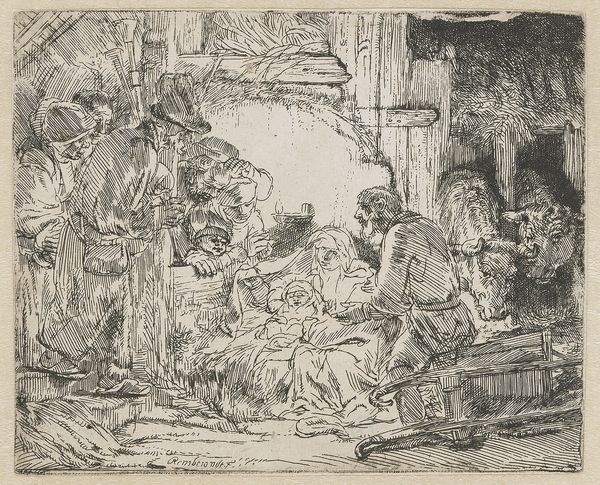
print, etching
#
narrative-art
#
baroque
# print
#
etching
#
figuration
Dimensions: height 104 mm, width 153 mm
Copyright: Rijks Museum: Open Domain
Editor: This etching, "The Angel Departing from the Family of Tobias," made by Rembrandt van Rijn in 1641, depicts what seems to be a moment of awe and divine intervention, made from a tangle of etched lines and shadowy figures. It's such a contrast between light and dark. What significance do you find in the composition? Curator: The abrupt departure of the angel embodies an emotional and psychological departure, but it's framed within an intergenerational family dynamic in a small domestic interior, suggesting a memory triggered for us and for the figures. The image freezes this flash of shared awareness. Light, so prevalent in Rembrandt's oeuvre, becomes a physical manifestation of that divine knowledge and communal memory. Editor: So, the bright light represents not only the divine but also a moment of shared recognition? I hadn't considered that. Curator: Exactly. And what of the figure in the shadows near the window? It seems so peculiar for them to look on, neither frightened, nor surprised. Editor: It could represent a cultural trope or stereotype for figures with limited means to become the invisible servants in a prosperous household? What symbols would that carry? Curator: Intriguing idea. Let's also consider the book next to what seems to be a seated male figure in the dark. What meaning might books have at that time and for this group of people in particular? Editor: Perhaps suggesting that the narratives in the book bear witness to their faith or contain secrets and insights to the mysteries of divine prescience. Thanks for guiding me; there are a number of other ideas now running through my head. Curator: Indeed. Artworks often function as symbolic triggers of deeply embedded historical and social contexts that shift our perceptions of familiar or forgotten histories.
Comments
No comments
Be the first to comment and join the conversation on the ultimate creative platform.
